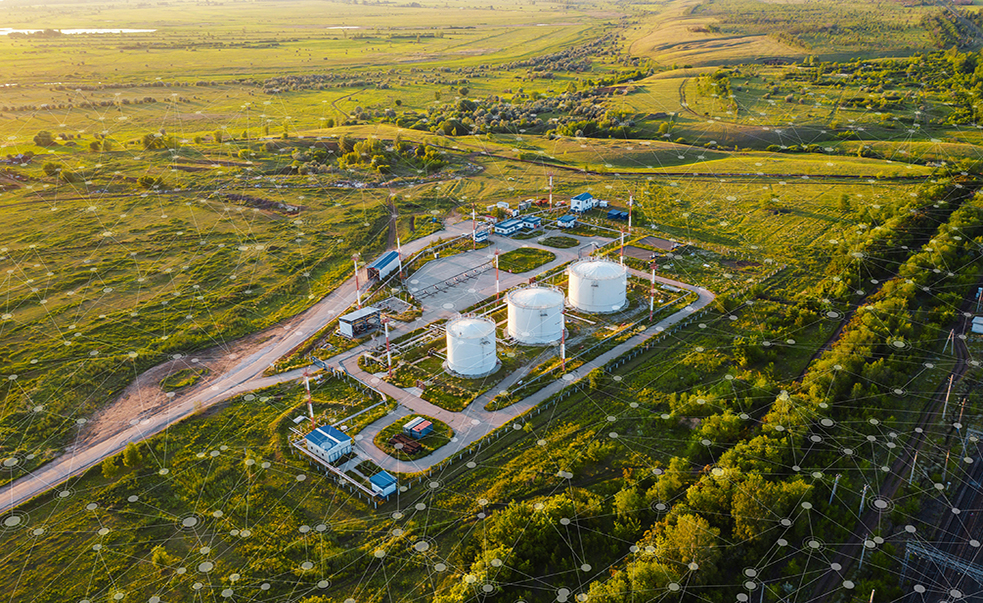Wireless mesh networks are well established. They create large-scale local wireless networks capable of multiple concurrent connections with a lot of redundancy. One in particular, Rajant’s Kinetic Mesh®, is unlike any other wireless mesh system on the market today, providing fully mobile broadband connectivity that is simple, instantaneous, and fail-proof in any application—giving a resilient mesh network solution that moves and evolves with connectivity demands and has demonstrated greater adaptability to network changes on-the-fly versus other types of networking.
Kinetic Mesh wireless networks emerged in the wake of 9/11 in response to the communications failures emergency personnel and families experienced that day. Since 9/11, Kinetic Mesh networks have made their way to Europe and other parts of the world, enabling people and organizations to deploy networks into places where communications infrastructure has been destroyed or damaged or where they never existed. This has allowed real-time mobility across networks to be achieved.
In disaster scenarios, as well as in other types of environments, any communications infrastructure needs to deliver throughput and scalability. The way communications are routed plays an important part in achieving these goals.
How it works
In a Kinetic Mesh wireless network, each node serves as a singular infrastructure, which enables all devices and the network itself to be mobile. It employs multiple radio frequencies and any-node-to-any-node capabilities to continuously and instantly route data via the best available traffic path and frequency, using hundreds of nodes.
If a certain path becomes unavailable for any reason – due to antenna failure or power loss to a piece of equipment, for example – nodes on the network use an alternate route to deliver the data, eliminating any downtime.
Traditional ways of network routing work just fine in a stable environment, but in rugged, dynamic environments, Kinetic Mesh is increasingly effective where infrastructure devices are constantly on the move. With data being sent and received simultaneously in real time, the network never fails as a whole and can operate with the same level of reliability even in the harshest conditions.
That’s because a Kinetic Mesh’s wireless router has extra processing power and solid state memory, which allow it to carry out edge-processing. This edge-processing can store video and other data, “groom” the data, and enable the data to be consumed directly from the router. The ability of a Kinetic Mesh platform to handle changes and process things at the edge give people access to their applications much quicker.
There are no single points of failure in Kinetic Mesh networks and networks can be redeployed in multiple ways simply and easily. Because there is no central control node, routes are built automatically and are evaluated for quality and performance 200 times per second. This artificial intelligence allows the network to adapt to node location, local interference and congestion dynamically despite conditions that would cripple other networks.
Autonomous applications
Robots and autonomous applications used by businesses are highly effective at reducing human costs by taking over mundane, physically taxing or dangerous tasks and streamlining business operations, improving efficiency and ensuring extreme precision. However, in regards to unmanned vehicles such as drones, there are challenges related to connectivity that will require a better network infrastructure than the status quo.
A drone connected to a network is essentially a flying computer, and thus is as hackable as any computer or smartphone, especially since many networks on which drones operate have low or no encryption. In addition to poor security, other network challenges include lack of scalability, distance limitations and lack of mobile connectivity.
Kinetic mesh networks are able to overcome these challenges, however – the wide-scale implementation of which could allow the commercial drone market to reach its full potential. Because it is highly secure, scalable and mobile, Kinetic Mesh gives a secure, private backbone on which to transmit data from a drone to a user or control centre while also detecting and preventing tampering and allowing encryption for data security.
Kinetic Mesh delivers end-to-end encryption, with 256-bit, military-grade encryption. When encrypted information flows through the mesh and comes to another node, it stays encrypted all the way through, and is not decrypted until it is delivered to its final destination, ensuring privacy and security. Metadata also is encrypted, which is very important as it prevents an attacker from analyzing the traffic and seeing which nodes are communicating with other devices.
Additionally, at each hop in the network, Kinetic Mesh provides a per-hop authentication for each packet. This detects whether data has been tampered with while ensuring a packet of information received by a node came from a trusted peer. This authentication protects against packet-injection cyber-attacks, preventing would-be attackers from “throwing” packets in to disrupt traffic.
Scalability and mobility
Employing a Kinetic Mesh network to operate aerial drones provides the security, scalability and mobility that standard networks cannot deliver. The technology can be easily redeployed and expanded in multiple ways, while still operating with the same level of reliability. While traditional mesh networks degrade as more nodes are added, Kinetic Mesh grows stronger with each additional node. The nodes self-configure, making it simple to expand the network.
Kinetic Mesh’s scalability can help circumvent current line-of-sight limitations. For example, a “string of pilots” allows multiple pilots to operate a single drone across great distances: A pilot can seamlessly turn over the control of the drone to another pilot farther away, and so on, with as many pilots as needed to achieve substantial distances. The drone is able to maintain connectivity to the network without disturbing the original flight plan or changing IP addresses, as would be the case on another type of network.
The network’s scalability means that there is no main access point – all nodes are peers to each other. There will be no need to “budget” bandwidth, which limits the number of drones one operator can have in the air at one time.
In addition to scalability, Kinetic Mesh offers complete mobility since everything is constantly moving – including the infrastructure, allowing an expansive network footprint that functions even in dynamic application such as drones. In a Kinetic Mesh network, multiple, redundant radio frequencies and any-node-to-any-node capabilities are deployed to continuously and instantly route data via the best-available path and frequency, even over dozens of nodes. If part of the network becomes congested or receives interference, the network instantaneously reroutes around any failure, keeping the drones in the air and on task.
Best-in-class mission-critical network infrastructure
Kinetic Mesh has been successfully used in multiple industry segments for mission-critical autonomous applications and supports the autonomous applications and network infrastructures of some of the largest companies in the world.
One such industry are underground mines and tunnels, which are some of the most challenging environments in which to deploy network systems. Connectivity and throughput demands are high, but circular ramps and declines, stopes, and mine layout place limitations on how far wireless signals can travel. Rajant’s Kinetic Mesh network brings mission-critical connectivity to underground mines and tunnels without the need for fiber.
Increasing efficiency in businesses
Across industries, businesses want to become more efficient in their operations and they want the latest data to make the most informed decisions. However, they must weigh the cost of collecting such information versus the benefit of having it for decision-making.
Kinetic Mesh networks are driving down the cost of gathering that information. As such networks are installed, the cost of the next unit of information is declining; therefore, it becomes worthwhile to gather such information toward making better operational decisions. Kinetic Mesh networks – adaptable, smart, productive, and dynamic – deliver such reliability and security based on their proven success in rugged environments and their demonstrated abilities to connect people in their never-ending quest to be mobile.
With ubiquitous connectivity growing in importance across industry sectors, the dependency on our communications infrastructure will grow exponentially and means a renewed focus on reliability and security.🖉













